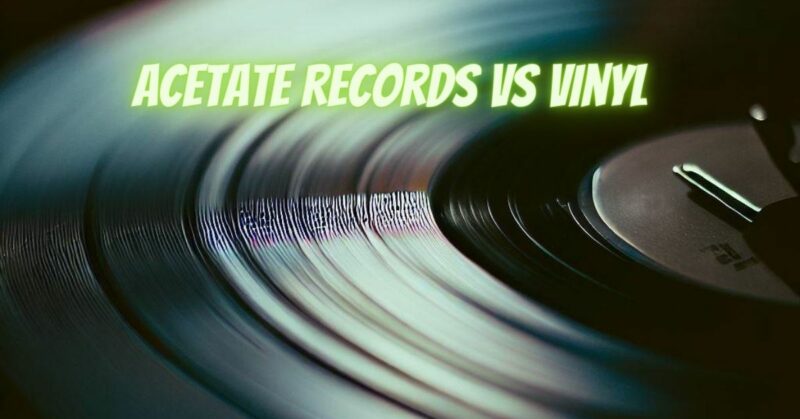Acetate records and vinyl records are both types of phonograph records, but they have some key differences. Acetate records are made from a thin sheet of acetate, while vinyl records are made from a thicker sheet of polyvinyl chloride (PVC). This difference in material gives acetate records a warmer, more analog sound than vinyl records. However, acetate records are also more fragile and can easily be damaged. Vinyl records are more durable and can withstand more wear and tear.
Here is a table summarizing the key differences between acetate records and vinyl records:
| Feature | Acetate Records | Vinyl Records |
|---|---|---|
| Material | Acetate | Polyvinyl chloride (PVC) |
| Sound quality | Warmer, more analog | Brighter, more detailed |
| Durability | More fragile | More durable |
| Cost | More expensive | Less expensive |
| Availability | Less common | More common |
Acetate records were the first type of phonograph record to be developed, and they were used extensively in the early days of recorded music. However, they were eventually replaced by vinyl records due to their durability and lower cost. Acetate records are still used today for test pressings and promotional copies of records.
Vinyl records are the most common type of phonograph record today. They are available in a wide variety of genres and prices, and they offer a good compromise between sound quality and durability. Vinyl records are also a popular collectible item, and some rare and valuable records can sell for thousands of dollars.
Ultimately, the best type of phonograph record for you will depend on your individual needs and preferences. If you are looking for the warmest, most analog sound possible, then an acetate record may be the best option for you. However, if you are looking for a more durable and affordable record, then a vinyl record may be a better choice.


